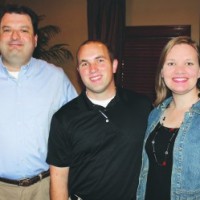
CATS Tax Came From Organizers Playbook
If Brod Bagert had come to the river city of Baton Rouge in the 1850’s fresh off the steamboat with a trunk full of snake oil and promises of miracle cures, he could not have gotten a more enthusiastic reception than he got when he arrived here in 2011 with promises to make Baton Rouge “the next great city.”
The veteran community organizer began working for the Industrial Areas Foundation in 2002. From his home in New Orleans, it was a natural step to come to Baton Rouge to help organize Together Baton Rouge and use public transportation to push an agenda of urban socialism.
The fact that Baton Rouge is a low density city where few people ride the bus didn’t matter. A host of religious liberals and some big businesses represented by the Baton Rouge Area Chamber were eager to join in.
Bagert helped Together Baton Rouge organize mass meetings and generate media exposure in almost every major media outlet in the city. They said poor people were suffering and the reason very few people rode the bus was not enough buses and not enough routes.
A tax would be needed, Together Baton Rouge said, to increase the CATS budget from $12 million a year to $30 million. A new 10.6 mill property tax, generating $180 million over 10 years was proposed for Baton Rouge, Baker, and Zachary. Other parts of the parish, which had voted against a smaller tax two years before, were excluded from the vote.
Bagert organized churches in the inner city to get out the vote, and the tax narrowly passed in Baton Rouge and Baker.
The website of Together Baton Rouge, www.togetherbatonrouge.org,
says in the “About” section that the group is part of the Industrial Areas Foundation. The Industrial Areas Foundation was organized by Saul Alinsky in 1940 and still follows many of his teachings on community organizing. Alinsky is famous for his book, Rules for Radicals: A Pragmatic Primer for Realistic Radicals. It was published just before his death in 1971.
Rules for Radicals, which is in pdf form on-line, says the end justifies the means and advocates direct action to create conflict.
Alinsky said community organizers should use symbol construction to create unity. He would draw on loyalty to a church or religious group to create an organization within which to function. Alinsky said create unity by identifying a common enemy, usually a local politician or opposing group. The next step is to destroy that person or group. The tactic is “Pick the target, freeze it, personalize it, and polarize it.”
One of Alinsky’s rules is “Power is not what you have but what the enemy thinks you have.” Another is “Make the enemy live up to its own rules.” Still another is “Ridicule is man’s most potent weapon.”
Alinsky focused on class warfare and knew that if he could make in-roads in the “middle class,” he could be victorious.
Snake oil sells!


 July 29, 2013
July 29, 2013 







No comments yet... Be the first to leave a reply!